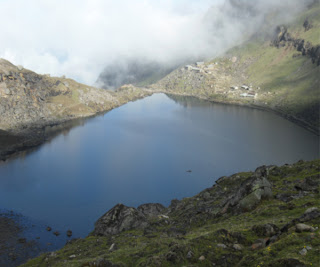User reviewed online profile of Te Urewera National Park: East Coast (Gisborne) region, New Zealand. Plan your adventure holiday to Te Urewera National Park armed with information and reviews provided by experts and by users. Find out about when to go, how to get there, what to do, best season to visit, its wildlife, habitat and much more...
What to do in Te Urewera National Park:
Wild Life:Tui, Bellbird, Morepork, North Island Kokako, Blue Duck, North Island Fernbird, Yellow-crowned Parakeet, New Zealand Scaup, North Island Brown Kiwi, New Zealand Falcon, North Island Robin, North Island Kaka, North Island Rifleman, Long-tailed Bat, Short-tailed Bat, Gecko, Skink, Koaro, Short-jawed Kokopu, Banded Kokopu, Blue-gilled Bully, Red-finned Bully, Long-finned Eel, Short-finned Eel, Common Bully, Common Smelt, Cran’s Bully, Torrentfish and Dwarf GalaxiaAdventure:Boating, Fly Fishing, Hunting, Tramping, Hunting and Short & Long Walks
Where is Te Urewera National Park:
Region:The Park straddles the Huiau and Ikawhenua Ranges, in the east of the North Island between Bay of Plenty and Hawke's Bay.Location:Gisborne district, East Coast (Gisborne) region, New Zealand
When & how to get to Te Urewera National Park:
Best Time to Visit:01-Nov to 31-MarGetting There:The nearest towns are Whakatane and Taneatua to the north, Murupara and Ruatahuna to the west, and Wairoa to the east. Near the shores of Lake Waikaremoana is the small settlement of Aniwaniwa where a visitor centre is located. Waikaremoana can be approached from two directions. State Highway 38 links Wairoa and the East Coast with the central North Island, and passes the lake and the Aniwaniwa Visitor Centre. The highway has a 2WD gravel surface for about 90km between Murupara and Aniwaniwa (about a 2 hour drive). There are well marked side roads to the main boat ramps, campsites and walk entrances. Privately owned shuttle buses and water taxis provide transport to either end of the Lake Waikaremoana Great Walk throughout the year. This allows walkers to leave their vehicle at the Waikaremoana Motor Camp, where they are more secure than at the walk ends. To access the northern part of the park via the Waimana Valley, take the Bell Road turnoff from State Highway 2. The road travels about 30 km up the valley to the Matahi Valley Road end. Caution is advised as most of this road is unsealed, narrow and windy.Nearest Town:WairoaNearest Airport:GisborneNearest Railway Station:Wairoa
Where to stay (Lodges/Guest Houses/Camps/Resorts/Hotels):
Accommodation:A variety of DOC (Department of Conservation) accommodation is available within the park including campsites, backcountry and great walk huts. On the Waikaremoana lake shore there is a fully serviced DOC motorcamp with motels, cabins, tent-sites, petrol and a store.
Add a hotel:If you know of a hotel, resort, guest house or camp please add it here. If you own or manage a hotel or resort you can add it to the database for 'Free'.
Climate & Weather conditions in Te Urewera National Park:
Temp:10 c to cRainfall:2400 cmAltitude:1366 m
Other details about Te Urewera National Park:
Established:1954Area:2,127 sq kmLanguage:English and Maori
Source:http://www.world-wildlife-adventures.com/directory/new-zealand/wildlife-park.asp?sanctuary=Te+Urewera+National+Park&state=East+Coast+(Gisborne)+region
Source:http://www.world-wildlife-adventures.com/directory/new-zealand/wildlife-park.asp?sanctuary=Te+Urewera+National+Park&state=East+Coast+(Gisborne)+region

No comments:
Post a Comment